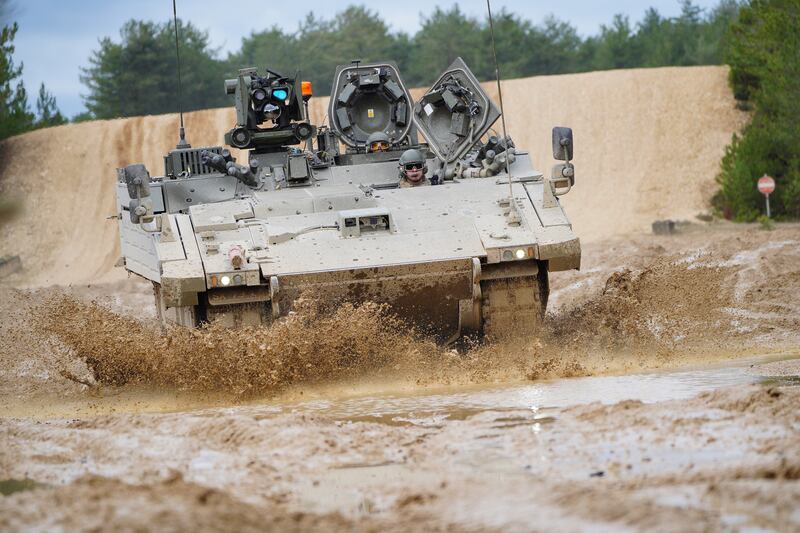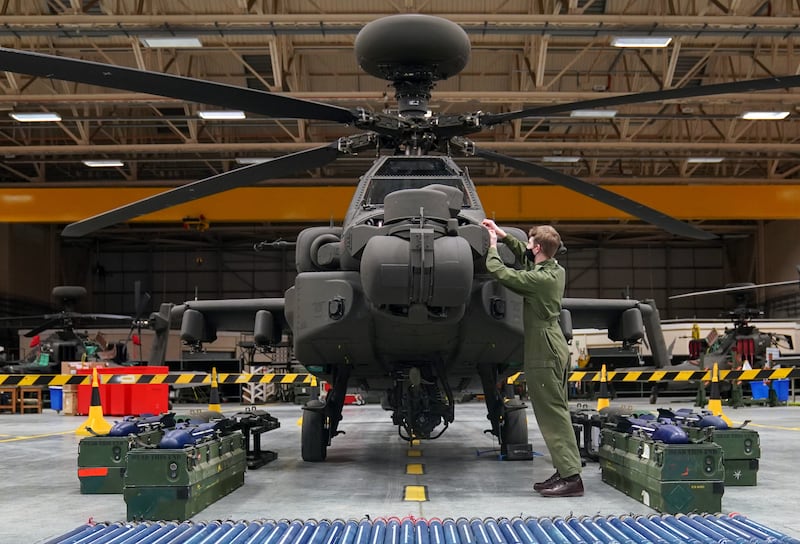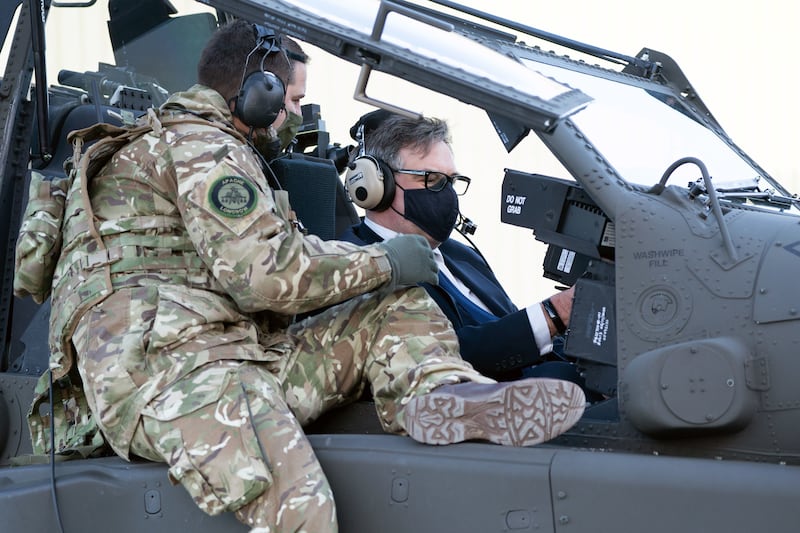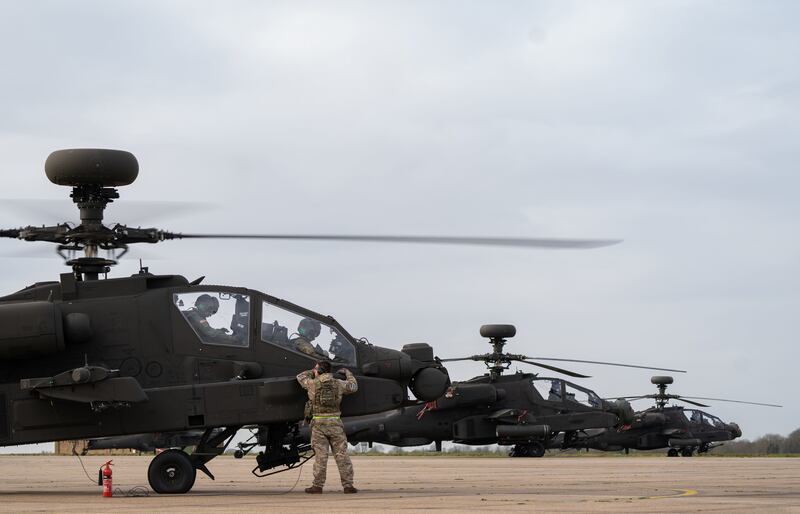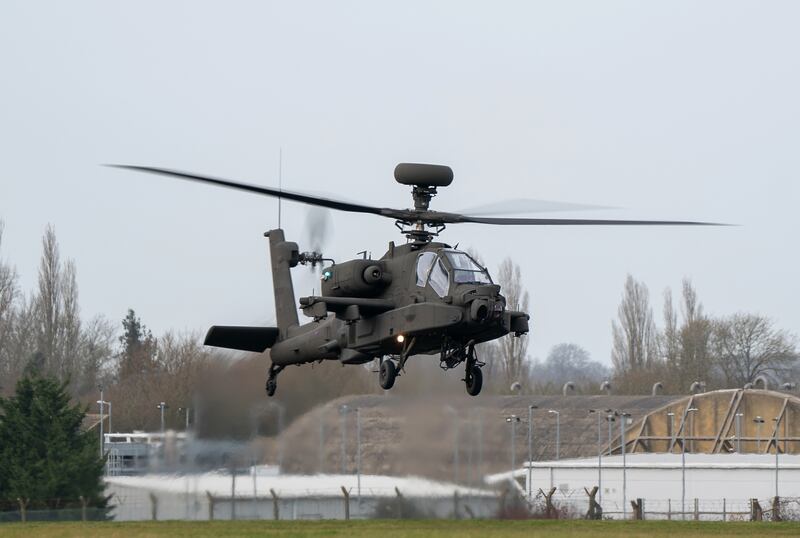The “troubled” £5.5 billion programme to build the British Army’s new Ajax fighting vehicle is “turning a corner”, Defence Secretary Ben Wallace has said.
The project has been severely criticised for running for nearly 13 years without providing a single deployable Ajax, as part of a plan by the Ministry of Defence to build 589 of the state-of-the-art vehicles.
The fighting vehicles were originally intended to enter service in 2017, but delivery has been repeatedly delayed, with problems including noise and vibration issues that injured soldiers testing the vehicles.
The early trial versions also faced criticism for not being allowed to travel faster than 32kph or to fire its cannon while moving.
Speaking in the British Parliament in December, former head of the Royal Navy Lord West of Spithead said: “The Ajax programme, no matter how much one dresses it up, has been a complete and utter disaster. It has been a real shambles.”
The Ministry of Defence agreed a fixed-price contract with General Dynamics for 589 Ajax armoured vehicles, with 37 taking part in the current trials and another 143 having already been built for earlier trials.
A total of 414 hulls have been built with 116 turrets ready to be fitted once the trials are completed.
British Army’s new Apache attack helicopters undergo test flights — in pictures
The Ajax variants have now completed user validation trials, which it is understood to mean they have overcome the issues that have dogged the vehicle and they are now undergoing reliability growth trials to prepare them for the battlefield although a finish date has not yet been confirmed.
During a visit earlier this week to Bovington Camp in Dorset, Mr Wallace was shown the Ajax being put through its paces at the training ground, including the armoured vehicle heading over a knife-edge ramp aimed at pushing the vehicles to their limits.
“I have been clear this was a troubled programme — It was started in March 2010, I inherited a troubled programme, I was determined I was going to put this right, I get a weekly update,” Mr Wallace said.
“We think the remedies are in place, we are now going through the normal trials, can it go after the hill fast enough, does it do these things? It is showing great signs and we will keep on it.
“I am confident we have turned the corner on this troubled programme.”
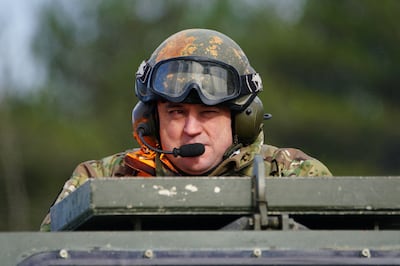
Mr Wallace said the aim is for the Ajax vehicles to be active in military units soon after the testing programme is completed in about 16 months’ time.
“They are already training with it now, all these things take time to train how to use it, we have over 100 assembled so when we get through these trials, we will get these into the units and be back on track,” he said.
It is understood that despite the production being described by Mr Wallace as “troubled”, the ministry considers some of the early problems to be development issues which have now been overcome in updated versions.
The issues of travelling at speed and the capability to fire while on the move were only to be tested in later models.
But a redesign of contact points for the soldiers using the tanks has been carried out to overcome issues of vibration and noise.
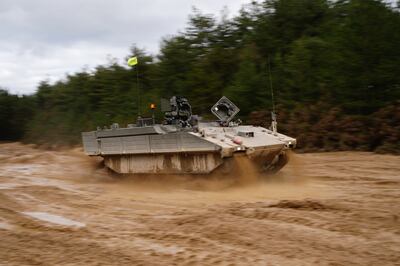
These improvements include new ear defenders with incorporated hearing piece for better communication, remounted seating with better cushioning, and improved joysticks and controls.
The testing so far has covered 120,000 kilometres of journeys, with 9,000 rounds of ammunition fired and 50 tonnes of armour shot at to test the correct level of protection for the vehicles.
The Ajax, which will be supplied to the 3rd Division, the main war-fighting division of the British Army, comes in six different variants, including the “workhorse” Ares people carrier.
The Ajax itself is the turreted version fitted with a 40mm cannon, with other variants designed as command, repair and recovery vehicles.
